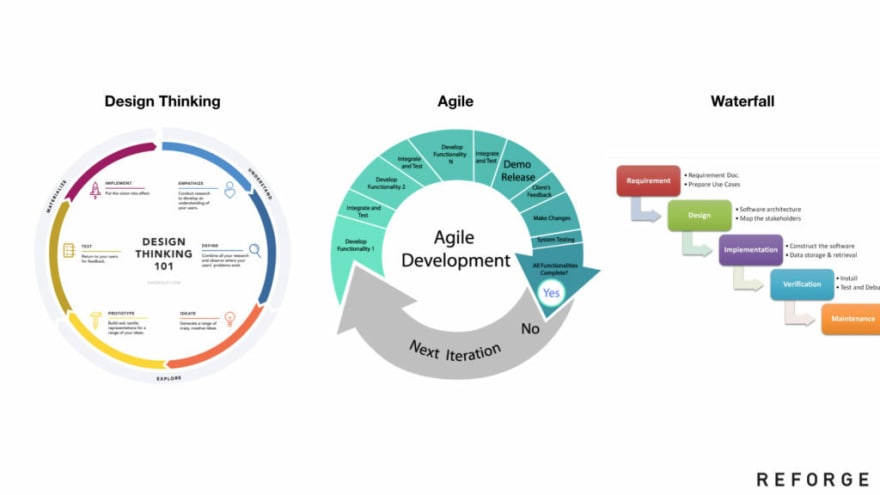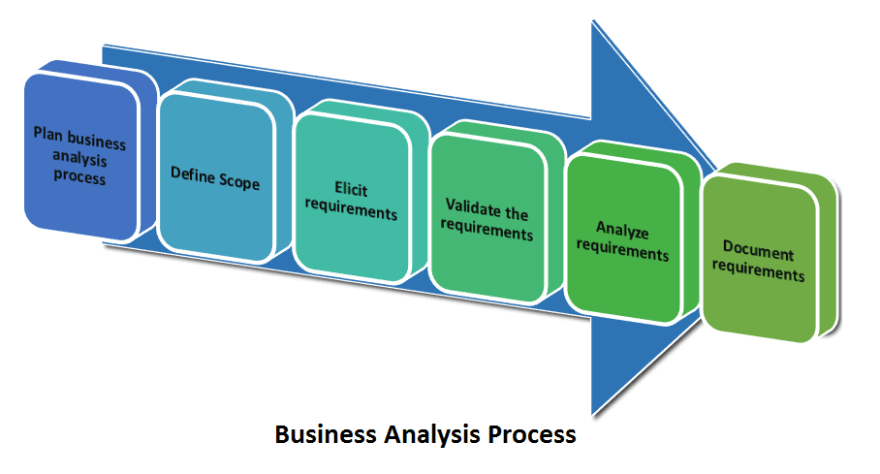As software development and testing continue to grow and evolve, so too must the team architecture and management practices of leadership. With a growing team comes new challenges and common issues that must be detected and addressed on time.
In this article, we will explore the various phases of team growth and the common challenges faced by tech leadership during each stage and also learn about tools and techniques to avoid pitfalls, because according to this report, disharmony among teams and investors is among the top reasons why tech companies fail.
Tech start-ups and teams
The historical background of tech startups can be traced back to the early days of the internet and the dot-com boom. This is when a new breed of entrepreneur emerged, one that was more comfortable with technology and its potential to create new businesses and disrupt existing ones. These entrepreneurs were quick to seize on new opportunities and were willing to take risks to achieve their goals.

Today, the tech startup landscape has changed dramatically. There are now many more verticals, each with its own distinct set of challenges and opportunities. However, the core ethos of the tech startup remains the same: to identify and capitalize on new opportunities through the use of technology. The most common pattern for team management in today's tech startups is to divide the process into 3 parts:
- Business Analysis (BA): The business analysis process is a set of activities conducted to identify business needs and determine solutions to business problems. Business analysts use a variety of techniques to perform these activities, including requirements gathering, process modelling, data analysis, and business process improvement. In the context of a tech company, BA will determine the design specifications and requirements for a tech product.
- Development Operations (DevOps): Development operations or DevOps is a set of practices that aim to automate and improve the process of software delivery. DevOps is a response to the intersection of two major trends in the IT industry: the increasing complexity of software delivery and the rising expectations of customers and businesses for faster and more reliable software releases. In a modern tech startup, the technical leadership/architects plus coders from the DevOps workflow. They are responsible for actually developing a software product.

A sample DevOps workflow using Docker
- Quality Assurance (QA/QAOps): At a tech startup, the quality assurance or QA team is responsible for making sure that the products and services that the company produces are of high quality and meet customer expectations. This involves developing and executing test plans, testing new and existing products, and reporting any issues that are found. The QA team works closely with the engineering team to ensure that products are designed and built to meet quality standards. Also, they are responsible for validating product features, versions and approving releases.

It is likely that a tech company will have dedicated teams for all 3 activities, but in a rapidly evolving market and ever-increasing degree of automation, most-optimal team structure will depend mostly on the specifics of the business use case.
The 3 processes are interdependent because they all need to be in sync with each other in order to produce a high quality product. Business analysis is responsible for understanding the requirements of the product, development operations is responsible for ensuring that the product is developed according to those requirements, and quality assurance is responsible for ensuring that the product meets the quality standards set by the business.
There are several common points of validation or work that these processes need to be in sync with. For example, the business analyst needs to make sure that the requirements are clear and achievable, the development team needs to make sure that they are building the product according to those requirements, and the quality assurance team needs to make sure that the product meets the quality standards set by the business.
If any one of these processes is not in sync with the others, it can lead to problems. For example, if the business analyst does not understand the requirements, the development team may build the wrong product. Or, if the development team does not build the product according to the requirements, the quality assurance team may find defects that could have been avoided.
Common trends and challenges
As a startup grows, so too must its structure and management practices. There are generally three phases of team growth:
Startup Phase:
- The startup phase is characterized by a small team size and a high degree of uncertainty. The biggest challenge during this phase is ensuring that everyone is on the same page regarding the project goals and objectives.
- Another common challenge during this phase is managing expectations. It is important to set realistic goals and expectations for what can be accomplished given the limited resources available. Expansion Phase:
- The expansion phase is characterized by a larger team size and a greater degree of specialization. The biggest challenge during this phase is coordinating all of the different moving parts.
- Another common challenge during this phase is maintaining quality control. With more people working on the project, there is an increased risk of errors or defects slipping through the cracks. To combat this, it is important to implement rigorous quality assurance procedures early on in the expansion phase. Maturing Phase:
- The maturing phase is characterized by stable team size and well-defined processes and procedures. The biggest challenge during this phase is sustaining momentum as everyone settles into their roles within the organization. This can be accomplished through continuous improvement initiatives that encourage everyone to identify areas for improvement within their own workflows.
- Another common challenge during this phase is managing change requests effectively. As new features or functionality are added to the project, it's important to have a clear process for managing change requests so that they don't fall through the cracks. In the startup phase, the primary goal is to build a working product and capture a decent market to ensure business sustainability and profitability. After a working version of the product is released to the customers, there is an immediate need for a quality assurance process to be set in place. But considering the lack of resources and rapid pace of change during that particular period, it is hard to come up with a testing strategy and plan that can scale up with the product and company smoothly.

As the team grows, the structure of the team will change. The most common challenge is making sure that BA, DevOps and QA are in sync. In order to do this, the tech leadership needs to be aware of the following:
- Establishing a consistent and repeatable testing process.
- Managing testing resources as the company grows.
- Keeping up with the pace of change as the company expands.
- Dealing with legacy code and outdated systems.
- Ensuring the quality of software releases.
- Managing customer expectations around software quality.
- Establishing clear and concise communication channels between the three workflows.
- Ensuring that each team is aware of the work that the other teams are doing and how it may impact their own work.
- Creating processes and procedures that allow for smooth and efficient collaboration between the three teams.
- Managing expectations and ensuring that each team understands the role that they play in the overall success of the company. The field of software testing is constantly changing, and new challenges are always emerging. As a result, tech leadership must be constantly adaptable and ready to face new challenges. New technologies and approaches are constantly being developed, and it can be difficult to keep up with the latest trends. However, it is important to stay up-to-date on the latest developments in order to be able to provide the best possible service to your clients. The software testing industry is constantly evolving and changing. Here are some recent trends and developments in the industry:
- Automation: Automation is becoming increasingly popular in the software testing industry. Automation can help to speed up the testing process and improve efficiency.
- Cloud Testing: Cloud testing is another trend that is gaining popularity. Cloud testing allows testers to test applications and systems in a real-world environment.
- AI/ML Based Tools: AI and machine learning are being used more and more in the software testing industry. AI and machine learning can help to automate the testing process to greater degrees and improve accuracy.
- QAOps: QAOps is a new trend in the software testing industry that focuses on grouping quality assurance teams, techniques and operations.
- Real-Device Cloud: Real-device cloud is a new trend in the software testing industry that allows testers to test applications and systems on real devices in the cloud.
Importance of cloud-based testing
With the ever-changing landscape of technology, the field of software testing has had to adapt in order to keep up. In the past, testing was done primarily on physical devices and platforms. However, with the rise of cloud-based services, testing is now often done in virtualized environments.
Cloud-based automated visual testing can be used to bridge gaps between business analysis, DevOps and quality assurance workflows by providing a way for all three teams to collaborate on testing and development projects. By using a cloud-based platform, all three teams can access the same tools and resources and can share information and results easily. This can help to streamline the development process and ensure that all teams are working towards the same goal.
Cloud-based testing platforms like BrowserStack provide a number of important benefits for software testers and tech leaders:
- Increased flexibility and scalability: With cloud-based testing, you can quickly scale up or down your testing efforts as needed, without having to invest in expensive hardware or infrastructure. This is especially helpful when you need to do large-scale testing for a new release or when unexpected issues arise.
- Reduced costs: Cloud-based testing can save you money on hardware, infrastructure, and maintenance costs. You only pay for what you use, and there are no upfront costs or long-term commitments.
- Increased speed and efficiency: Cloud-based testing platforms offer pre-configured test environments that are always available on demand. This means you can get started with testing immediately, without having to set up and maintain your own test environment.
- Improved collaboration: Cloud-based testing platforms make it easy for distributed teams to collaborate on test cases and results in real time. This is essential for efficient and effective team communication during the software development process.
- Better insights and analytics: With cloud-based testing, you can collect data from every test run and use it to improve your overall process Cloud testing platforms can help in validating application projects and syncing BA, DevOps and QA with the work being delivered in several ways.
- Cloud testing platforms can provide a way to test the product on a variety of devices and browsers. This can be helpful for the business analyst, who needs to make sure that the requirements are clear, and for the quality assurance team, who needs to make sure that the product meets the quality standards set by the business.
- Cloud testing platforms can provide a way to automate the testing process. This can be helpful for the development team, who needs to make sure that they are building the product according to the requirements, and for the quality assurance team, who needs to make sure that the product meets the quality standards set by the business. Percy dashboard is a collaborative visual tool for managing differences and approving releases.
- Cloud testing platforms can provide a way to share the results of the testing process with the team. This can be helpful for the business analyst, who needs to make sure that the requirements are clear and achievable, and for the development team, who needs to make sure that they are building the product according to the requirements.
- Cloud testing platforms can provide a way to track the progress of the testing process. This can be helpful for the business analyst, who needs to make sure that the requirements are clear and achievable, and for the development team, who needs to make sure that they are building the product according to the requirements. Owing to all these practical advantages we can safely say that the future of business-critical software testing is going to be cloud-based and highly automated.







Top comments (0)